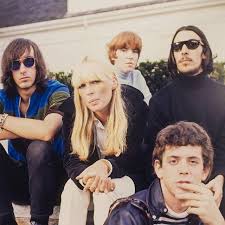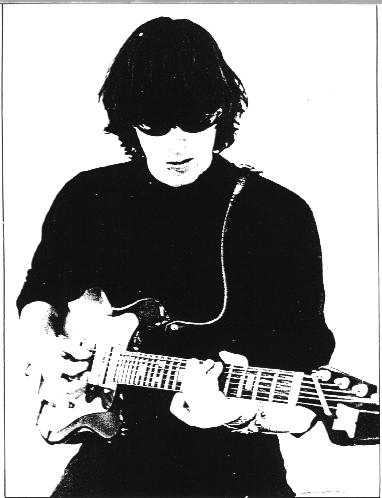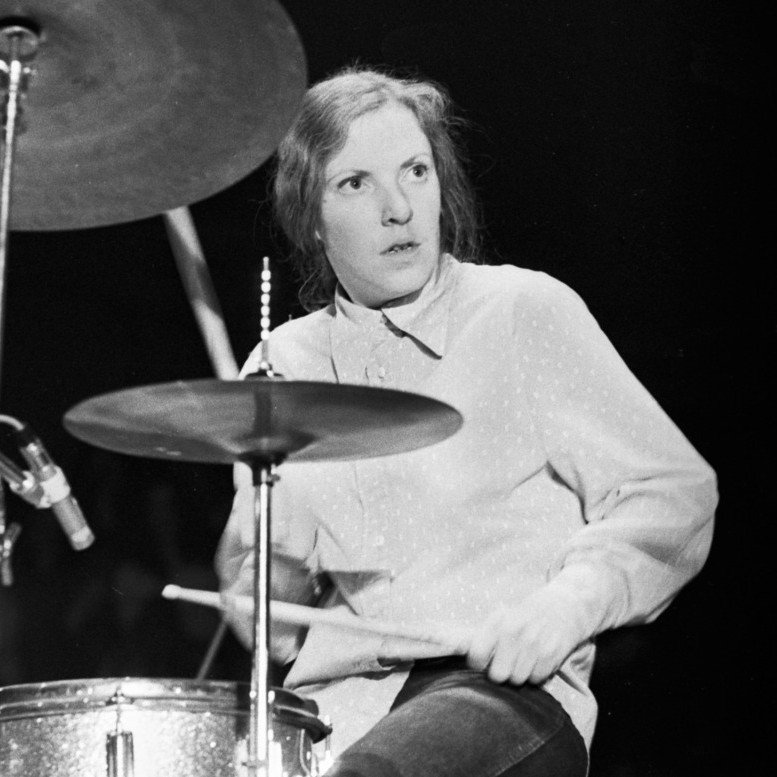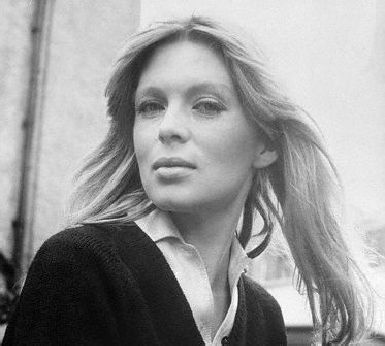
What happens when two musicians who are into Free Jazz and classical avant-garde decide to form a Rock’n’Roll band?
At first, the world ignores them. But some people listen, and some of them form their own bands, and over time something miraculous happens: their music changes Rock as we know it.
Here’s David Bowie’s insight on this:
Hearing Bowie’s take, one natural reservation comes to mind: The Beatles’ influence is often unacknowledged because it is so pervasive. Their music has entered our culture so deeply that it’s almost inevitable for a musician in Pop/Rock to bear their influence, even if subconsciously.
True. But the Velvet Underground can boast about an achievement that The Beatles, with their undeniable greatness, can not: From the late 1960’s to this day, generation after geneation of musicians and bands, through ever changing styles and fashions, attribute a major part of their decision to play Rock (or play it in a certain way), directly and explicitly to The Velvet Underground, spawning whole genres as a result.
And to think – a band that had no hits and no kind of wide public recognition during their existence. How could this be?
Let’s delve into the history and try to figure it out.
Lou Reed
Born Lewis Allan Reed on March 2 1942 to a Jewish family (they had changed their name from Rabinovitz to Reed), Lou Reed would go on to say that although Jewish, his real god was Rock’n’Roll.
“I studied classical piano, and the minute I could play something I started writing new things. And I switched to guitar and did the same thing. And the nice thing about rock is, besides the fact that I was in love with it, anyone can play that. And to this day anyone can play a Lou Reed song”
(from a 2004 interview)

Lou Reed grew up in Freeport, Long Island. He played in several bands during his time in high school. His first recording was with one of them – a doo-wop group called The Jades.
As Reed was suffering from anxiety and a bout of depression towards the end of the 50’s, his parents were pressured to consent to electroconvulsive therapy, a traumatic experience that he would write about later in his musical career.
After recovering Reed went to Syracuse university to study journalism, film directing and creative writing. He studied under poet Delmore Schwartz whom he credited with showing him how “with the simplest language imaginable […] you can accomplish the most astonishing heights.”
In 1961, during his time in Syarcuse, he began hosting a radio program featuring doo wop, r’n’b and Jazz – particularly free jazz, one of his favourite genres after Rock’n’Roll.
“Ornette Coleman […] it’s always been Ornette. Lonely Woman is one of the greatest songs ever written. Not a day goes by without me coming back to it”
— In an interview, 2004
In 1964 Reed moved to New York City and began work as an in-house composer and song writer for Pickwick records, mostly penning filler material for albums and compilations showcasing the label’s artists, something playing or even singing on the recording (often a “band” was invented to perform a song so as to fill a space on a record).
“I got a job as a staff songwriter at a real pittance. […] It was just me and these three other guys writing essentially what would be called hack stuff. […] And it was a great experience because you got to record them… The writing is nothing, but it’s like training. I’ve only had two or three real jobs in my life. None of them lasted very long. But one of them was to file the burr off a nut in a factory, and that’s what this was.”
— In an interview, 2004
Later in 1964 Reed wrote and recorded the single “The Ostrich”, a parody of popular dance songs of the time. His employers felt that the song had hit potential and assembled a supporting ad hoc band, “The Primitives”, to promote the recording.
The Primitives included Welsh avant-garde musician John Cale who had recently moved to New York to study music.
Cale noticed that for “The Ostrich”, Reed tuned each string of his guitar to the same note, a technique he knew from his work in drone music. The two befriended each other and started writing songs together for Pickwick. But soon enough their partnership would grow to eclipse Pickwick records altogether.
John Cale
“Oddly, it was not really Lou Reed who attracted me to the Velvet. To me, the sound of the band was John Cale. That was confirmed a few years later when I worked with Lou on Transformer. John was the subversive element of the band, one of the most underrated musicians in rock history. That guy is a danger, a true character. I cannot think of anybody more terrifying and dark. Lou Reed is a choirboy compared to him.”
— David Bowie in a 1993 interview for the Rolling Stone magazine

John Davies Cale was born on 9 March 1942 in the mining village Garnant, close to Swansea in Wales. He was raised speaking Welsh, learning English as his second language in primary school. In school he discovered a talent for music and learned to play the piano and the viola.
“I was the fall guy for the school orchestra in Wales. They’d palmed out all the other instruments; the only one left was a viola, and I took it. And then I learned the material written for viola is really nowhere near as good as the material for violin. It’s disappointing. You end up playing stuff that was written for the violin on the viola.”
Cale studied music at the University of London. While there he got involved with the avant-garde collective Fluxus, organizing an early Fluxus concert as well as having two scores published in Fluxus Preview Review.
He also conducted the first performance in the UK of Cage’s Concert for Piano and Orchestra.
In 1963, he travelled to the United States to continue his musical training with Aaron Copland. In September 1963 he participated, along with John Cage and others, in an 18-hour piano-playing marathon, the first full-length performance of Erik Satie’s “Vexations”.
Fun fact: at the conclusion of the 18-hour concert, an audience member shouted: “Encore!”.
From 1963 to 1965 Cale joined minimalist La Monte Young’s ensemble The Drean Syndicate a.k.a. Theatre of Eternal Music, along with Tony Conrad, Angus McLise and others.
“We were digging into all sorts of things, intonations, tonality. La Monte was playing saxophone, Marian was holding the drone, Tony [Conrad] was bowing the guitar, and I was bowing the viola. […] we’d sit down and play and people would come by and join in”
In 1965 Cale, Conrad and another Young-associate, Walter de Maria, were hired for the band The Primitives, along with Lou Reed, for the purpose of recording some gimmick songs Reed had written for record label Pickwick. Consequentally a musical partnership started between Cale and Reed.
This would prove an opportunity for Cale to scratch an itch he had started to feel by 1965.
“He had a revelation […]. He’d dedicated the majority of his first two decades to classical and avant-garde music, to such an extent that, he says dryly, ‘I may have missed out on my puberty'”
[from A Rolling Stone interview]
“I woke up one day and said, ‘Wait a minute, […] The Beatles Invasion was going on. All the enjoyment that I’d gotten as a kid out of Rock & Roll was receding, and I thought, ‘Let’s put something together that blends the two.’ I wanted to cross-pollinate rock with the avant-garde, and then I met Lou Reed and that was the solution.”
“I just wanted to move out of La Monte [Young]’s sphere. When Lou played me the songs at Pickwick and said, ‘They won’t let me record these songs,’ it kind of pissed me off. I said, ‘Let’s go and do it ourselves. […] Let’s put a band together and go out there and play them.” And that’s where it started.

From Pickwick to the Factory
The initial band formed by Cale and Reed was an extension of the Primitives. Tony Conrad was gone from very early on. Cale brought in Angus McLise from the Dream Syndicate as a replacement for Walter de Maria on drums. The first lineup was completed when Reed brought in Sterling Morrison, an acquaintance from college, as a second guitarist.
“Sometimes, I think his guitar playing is very much like his first name – sterling. It’s involved. And yet it has a grace and elegance to it, even in the fast-note runs. You could play me a hundred guitars, and I could spot Sterling.”
— Lou Reed on Sterling Morrison’s guitar style

Initially called “The Warlocks”, the band changed their name to “The Velvet Underground”, after a book about the secret sexual subcultures of the early 1960’s, which Conrad brought one day to show them.
When the velvets’ first manager, Al Aronowitz (incidentally, the guy who introduced Bob Dylan to the Beatles) arranged for their first paying gig McLise abruptly left the group, claiming they were selling out.
They got Maureen (“Moe”) Tucker, sister of Jim Tucker, old friend of Morrison and college friend of Reed, to replace him for what was supposed to be this one concert; but, despite initial objections from Cale, she became a permanent member.

In late 1965 the Velvets started a residency at the Café Bizarre. Due to the club’s “anti-rock group” policy Moe was restricted to banging on a tambourine.
“Our joke was we knew how good we were by how many people we drove out”
— Moe Tucker
“We played a tourist trap in the village, the Café Bizarre. There was nothing bizarre about it, it was just a dump. […] We played ‘The Black Angel’s Death Song’ which gets pretty atonal. These guys went crazy and said ‘if you play another song like that we’ll beat the shit out of you’. So we played it again and that was the end of it. We were fired. But adopted by Warhol that week as it turned out”
— Lou Reed
By 1965 Andy Warhol had started to grow bored with painting and expand into other mediums. His forays into experimental film brought him into closer contact with the underground cinema circles that The Velvet Underground also were associated with for a while – they used to provide live musical accompaniment in underground film screenings occasionally.
One day, Underground filmmaker Barbara Rubin brought Warhol, along with others, including Nico (more on her later) to the Café Bizarre to see the Velvet Underground. Warhol loved the band’s confrontational edge and decided to take them under his wing.
Fired from the Café Bizarre, with nowhere else to go, the Velvets found a new home in The Factory, as Andy Warhol’s studio was called.
The Factory served as a studio for Warhol and associates from his circle as well as being a venue where all sorts of people would congregate – celebrities, artists, musicians, underground filmmakers, media personalities, models, actors but also junkies, drug dealers, sex workers, drag queens, and other colourful figures of all walks of life, who would inspire Reed’s lyrics for years to come.
“I loved him on sight, he was obviously one of us. […] I didn’t know who he was, I wasn’t aware of any of that, amazingly enough. But he was obviously a kindred spirit […] and so smart with charisma to spare. And for a quote ‘passive’ guy, he took over everything. […] He was in charge of us, everyone. You look towards Andy […] He was so smart, so talented and 24 hours a day going at it.
Plus he had a vision. He was driven and he had a vision to fulfil. And I fit in like a hand in a glove”
— Lou Reed on Andy Warhol
Warhol envisioned the Velvets joined by a beautiful chanteuse and despite initial reluctance from the band, after much convincing, they agreed and were joined by Christa Päffgen, aka Nico.

Nico
Christa Päffgen was born on October 16 1938 in Cologne, Germany. She began modelling as a teenager in the late 1940’s and became a prominent fashion model. At age 16 a photographer gave her the nickname Nico which she continued to use for the rest of her life.
Through her travels for work she learned English, French and Spanish.
Her acting career started with television ads. After that she had a few small roles in cinema, notably a minor role as herself in Felini‘s “La Dolce Vite”. By then she had moved to New York and began taking acting classes (in the same class with Marilyn Monroe, she would later claim).
In 1963 Nico got the lead role in Jacques Poitrenaud‘s “Strip-Tease”. This came along with her first foray into singing – she sang the theme song for the movie, written and composed by Serge Gainsbourg.
Nico took on more singing jobs afterwards. She would sing standards at a New York nightclub. In 1965 she met Brian Jones of the Rolling Stones and he produced her first single – “I’m not sayin'”, featuring Jimmy Page as a session player.
Also that year she met and had a brief affair with Bob Dylan whose song “I’ll Keep It With Mine” she would go on to perform on her debut album (it’s undecided whether Dylan wrote the song for her or for Judy Collins).
Through the likes of Jones and Dylan, Nico was introduced to Andy Warhol and began taking part in his experimental films.
It was around that time that she joined Warhol and some other underground filmmakers in a visit to a place called Café Bizarre, to check out an unconventional rock group they had heard about.
At Warhol’s suggestion, she would join them on vocals for a few of their songs, including some that were written especially for her.
“When she first showed up on the scene she was tall, very blonde and very teutonic and immaculate. Slowly over the years we learned that she was deaf in one ear but that didn’t really matter, she had a persona on stage and everybody was riveted by it. And Lou wrote her some very beautiful songs”
— John Cale
It is long due for us to actually listen to some of the Velvet’s music and analyse it. We will begin to do so in the second volume of this book which covers the first two LPs of the Velvet Underground and we’ll be using concepts from the course where applicable.
Published: Dec 8, 2019
Latest Revision: Dec 31, 2019
Ourboox Unique Identifier: OB-696262
Copyright © 2019








